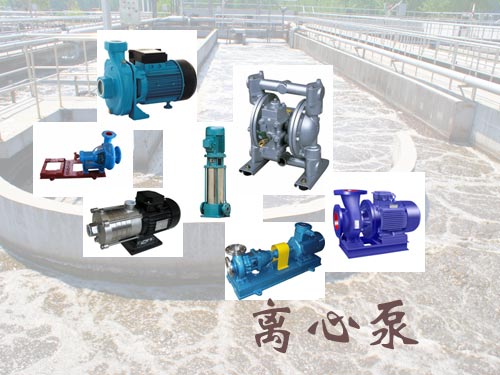 The per capita occupancy of water resources in China is small and the spatial distribution is uneven. With the acceleration of urbanization and industrialization in China, the demand gap for water resources is also increasing. In this context, the sewage treatment industry has become an emerging industry and is currently in an equally important position with the tap water production, water supply, drainage, and water reuse industries.
The per capita occupancy of water resources in China is small and the spatial distribution is uneven. With the acceleration of urbanization and industrialization in China, the demand gap for water resources is also increasing. In this context, the sewage treatment industry has become an emerging industry and is currently in an equally important position with the tap water production, water supply, drainage, and water reuse industries. There are many kinds of sewage treatment equipment, among which the centrifuge is a kind of more common equipment. Centrifuges are mainly used to separate the solid particles in the suspension from the liquid; or to separate the two incompatible emulsions in the emulsion (for example, to separate cream from the milk); it can also be used to eliminate Liquids in wet solids, such as washing wet clothes with a washing machine; special overspeed tube separators can also separate gas mixtures of different densities; use different characteristics of solid particles of different densities or particle sizes in the liquid, some settlement Centrifuges can also classify solid particles by density or size.
Centrifugal pump, the main component of the centrifuge, is designed according to the principle of centrifugal force. High-speed rotating impeller blades drive the water to rotate and throw water out to achieve the purpose of transportation. There are many kinds of centrifugal pumps, from the use of can be divided into civilian and industrial pumps; from the transmission medium can be divided into clean water pumps, impurity pumps, corrosion-resistant pumps. Centrifugal pumps can be widely used in electric power, metallurgy, coal, building materials and other industries to transport slurry containing solid particles. Such as thermal power plant ash, metallurgical ore dressing plant slurry transport, coal washing plant coal slurry and heavy medium transportation.
By the end of 2005, of the 661 municipal cities in China, 792 sewage treatment plants had been built in 383 cities, and the sewage treatment rate had increased from 34% in 2000 to 52%, and a sewage treatment line and management suited to the national conditions had been formed. mechanism. Among them, the sewage treatment rate of 135 cities has reached or approached 70%, and the single-plant treatment capacity has reached 1 million cubic meters per day.
In 2007, investment in water pollution control in China reached 338.76 billion yuan, an increase of 32% over the previous year, accounting for 1.36% of GDP for that year. China's water environment quality has remained stable overall. In 2007, a total of 942 sewage outfalls in the first-grade water protection areas were banned, and 1,294 construction projects that may cause pollution in the construction of the second-level water protection zones were suspended, and 931 were treated within a limited time.
As of the end of September 2010, a total of 2631 sewage treatment plants have been built in cities, counties and some key towns (hereinafter referred to as “townsâ€) established in cities across the country, with a sewage treatment capacity of 122 million cubic meters/day; There are 1849 projects with a total design capacity of approximately 46.6 million cubic meters per day. In cities established nationwide, 593 cities have sewage treatment plants, accounting for 90.7% of the total number of cities in the city; a total of 1,623 sewage treatment plants have been built, forming a sewage treatment capacity of 104 million cubic meters/day; 36 of them are large. The medium-sized cities (municipalities, provincial capitals and cities with separate plans) have 376 sewage treatment plants with a treatment capacity of 43.68 million cubic meters per day. In the counties, townships, and towns, there are 933 counties (including the Xinjiang Production and Construction Corps group-level units) built with sewage treatment plants, accounting for 52.1% of the total number of counties; there are 1,008 wastewater treatment plants in county and townships and towns. With a processing capacity of 18.26 million cubic meters per day.
It can be seen that the sewage treatment industry is ushering in a period of rapid development and will undoubtedly also promote the increase in the demand for centrifugal pump products.
Chair And Table Mould,Mold Killer ,Mold Cleaner ,Mold Treatment
Plastic Mould Co., Ltd. , http://www.nbmoulds.com
![<?echo $_SERVER['SERVER_NAME'];?>](/template/twentyseventeen/skin/images/header.jpg)